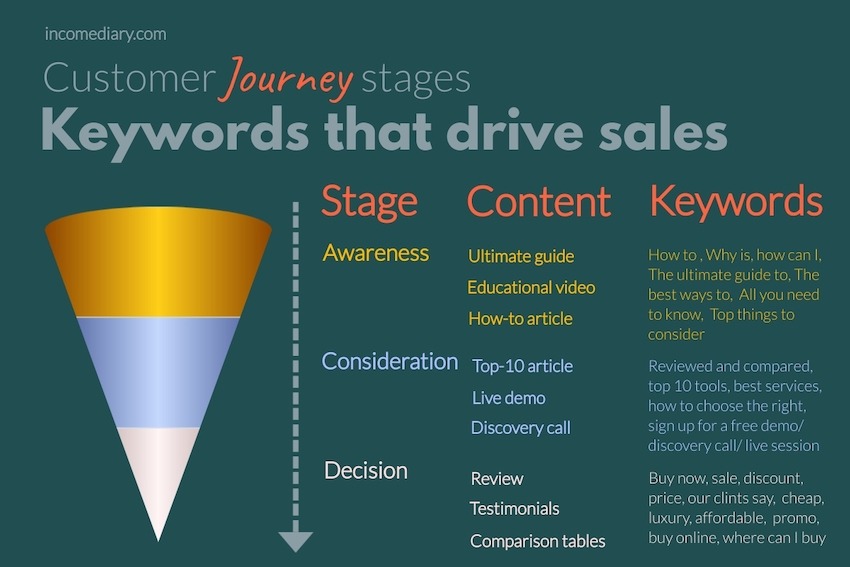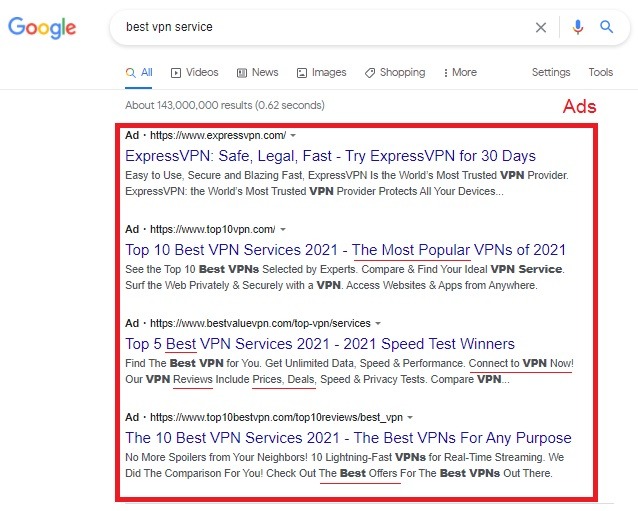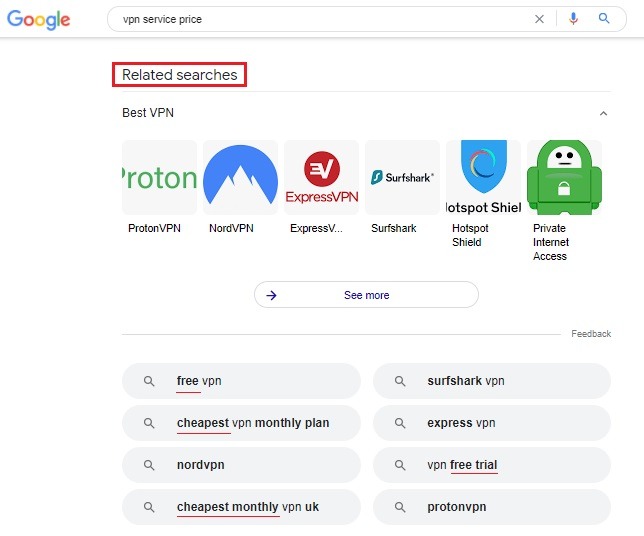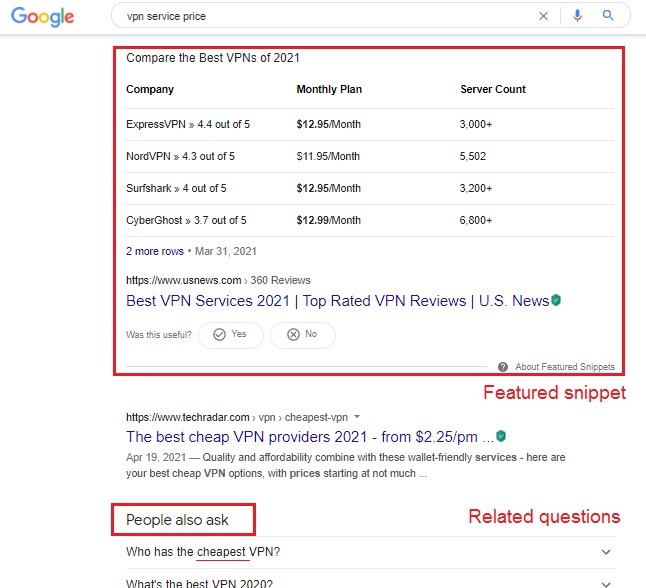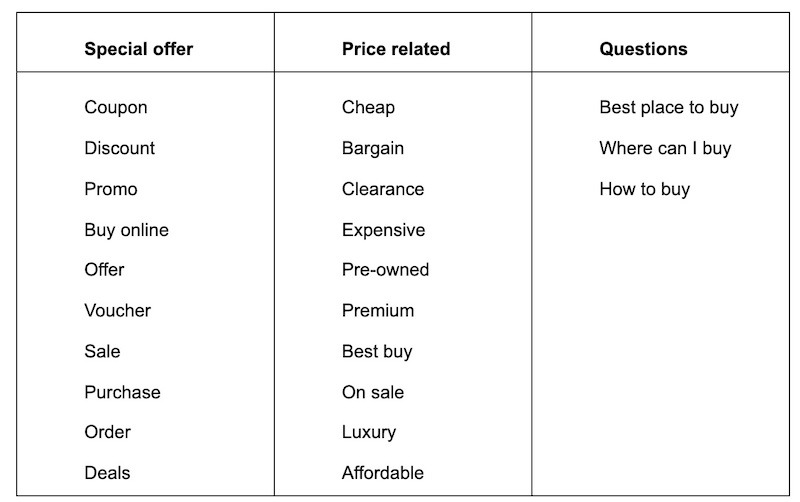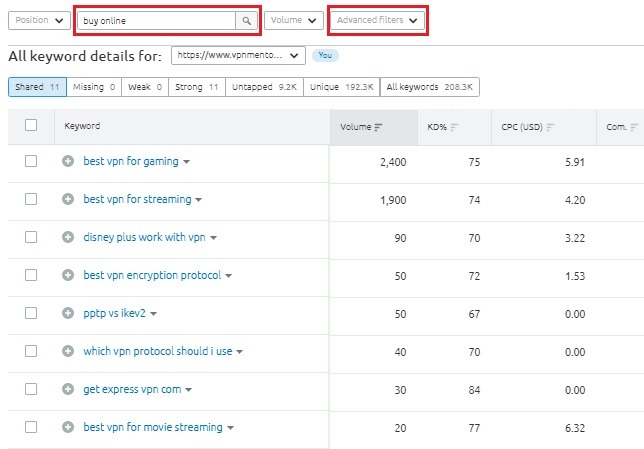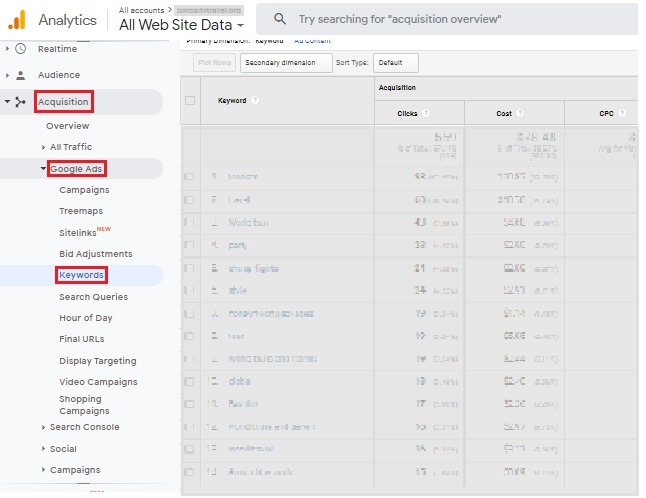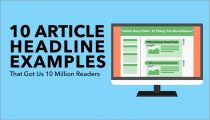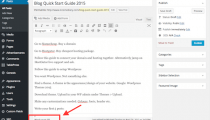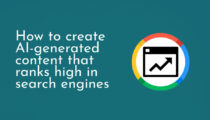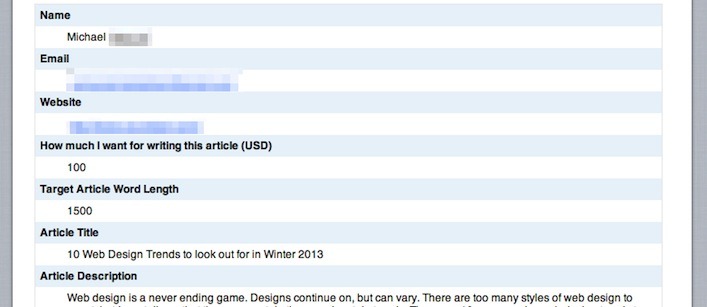Find Keywords, Buyer Intent Keywords – How To Find Them. [Best Guide]
A clear vision on how to find keywords is essential for running any successful website because keywords drive traffic.
However, traffic does not necessarily mean sales.
Many “successful” digital startups can barely survive while getting thousands of visitors every single day.
How is this possible?
The reason is that most website visitors are not interested in buying a product or service. Or at least not right now!
If we want to make money off a website, we need to make sure our target audience is ready to make a purchase.
So instead of popular keywords, we need to find keywords that show buyer intent.
When you find keywords with buyer intent, you Strike Digital Gold!
You will learn more about them in detail, but first, let’s take a look at the numbers.
Why search intent is more important than traffic
While driving traffic to your website is important, conversion is what ultimately matters. General requests like “coffee machine” have a high search volume, but are not likely to bring in many potential clients.
Instead, a specific keyword “espresso coffee machine” or a branded keyword “Jura coffee machine” may have much fewer monthly searches. However, people are much more likely to actually buy a coffee machine: they have made up their minds, and now looking for the best deal.
How much does it cost to advertise for a query “coffee machine” in the United States? Let’s check in Semrush, our top favorite tool for keyword search.
Find keywords that make money: Understanding buyer intent.
In the above example, the latter two keywords are more profitable, judging by the CPC (cost-per-click). Even if you don’t want to invest in paid advertising, CPC is a very important metric to look for. This metric shows how much you need to pay per click if you run a paid ad.
CPC is an indicator of a high-performance buyer intent keyword. The higher is the CPC, the more companies are willing to pay to get found on this keyword.
Despite a lower number of searches, companies choose to pay for specific and branded keywords. Because these words drive more sales. Nobody would pay a lot of money for the words that don’t convert. So the words with high CPC are the most lucrative to target for organic campaigns.
Rather than focusing on traffic alone, we need to identify the buyer intent and target prospects, who are the most likely to buy.
For a real-life example, let’s take this blog.
Two of our most popular pages (with something like 3900 top 100 keyword rankings between then) brought us, 6460 visitors, last week. Yet they only earned us a few dollars (less than $20)
But another of our pages, with much less traffic (794 to be precise) earned us almost 50 times more in the week than the other two pages combined.
Not only that, this particular page continues to make us significant money, week in, week out!
The difference is…
This particular page ranks for more of the keywords that matter…
It ranks for keywords that show buying intent!
Customer journey stages
To find buyer intent keywords with high conversion rates, you need to target people that are at the right stage of the customer journey. In any industry, a buyer generally goes through the same three stages: awareness, consideration, and decision.
Awareness. In the first stage, they realize they have a problem, but cannot properly identify it. This is where the initial search begins.
Consideration. This is where your potential client has already figured out what exactly their problem is. So they start looking for more specific solutions.
Decision. The final stage is where your potential client knows how to resolve their problem and compares the available options. This is the final stage of a customer journey, which finishes with a purchase.
Buyer keyword types and relevant content
At every stage of a customer journey, your potential clients will be looking for different content. Naturally, to find it they will use different keywords.
Informational
At the Awareness stage, a potential buyer is looking for informational resources. They are not sure what they need, so they want to learn more about the subject. At this point, they will look for ultimate guides, educational videos, and all kinds of introductory resources.
The probability of converting your website visitor into a customer at this stage is low. They are just looking for information. However, you can expect high traffic and potentially build a loyal audience over time. If you want to enter the game at this very early stage, the best content types for you are guides and videos like this:
What To Consider When Buying A Coffee Machine. This piece of content even got featured in the snippet.
How To Make Money Blogging 2021 – What Works, What Doesn’t
Create and sell online courses: the ultimate guide
While at the awareness stage, people use informational keywords, such as “how to”, “how can I”, “where to”.
Navigational
At the consideration stage, your potential customer has already studied the topic and realized what kind of solution they are looking for. At this point, they will consider and compare the products and services, the price, and the overall value-for-money ratio. Basically, they are discovering what you and your competitors have to offer. This is navigational content.
To target people at this stage of the customer journey, include a detailed description of your services, various pricing packages, and comparison tables with your competitors.
Some examples of the content driving traffic at this stage:
The Best Keyword Research Tools For Ranking Your Blog or Website
15 Best Coffee Makers: Your Barista-Quality Coffee At Home
When looking for such content, people use navigational keywords, such as “what is the best keyword search tool” or ‘best coffee machines”
Transactional
Your potential clients are no longer looking for informative guides or even an outline of services. They have decided what kind of product or service they want and perhaps shortlisted a few providers. They look for prices and compare similar market players.
These visitors are the most likely to buy so we want to drive them to the website. In order to do this, we need to create clear pages, that answer a buyer’s questions, such as:
Testimonials – Nespresso Professional
OptiMonk Review – The Best PopUp Software For Getting Email Subscribers!
Semrush Subscription Limits Comparison
At this stage, clients use transactional (or buyer) keywords in their search such as “buy”, “discount”, “free shipping”. These keywords indicate that a prospect has already made a decision to buy. They are now looking for special offers or a better deal.
Buyer intent keywords close a sale. But it would be a huge mistake to limit your SEO strategy to these keywords only. Your aim is to find keywords for each stage and then create helpful content around them. Once you have all three types of content on the website and have incorporated high-performing keywords for each stage, you are well placed to gradually lead a client down the marketing funnel.
Find buyer intent keywords
Understanding how to find keywords for each customer journey stage is vital. Here are some useful tools you can try, when doing keyword search for SEO.
How to find keywords using Google search
The first and easiest step to find buyer keywords for your niche is doing a Google search. Simply by typing in your industry keywords + “price” you find three content groups rich in the buyer keywords you are looking for:
- Ads. Ads are designed to drive sales and are specifically aimed at the people looking to buy now. Most of the ads on page 1 of Google have been tested for various buyer keywords, so the words you see must be the winners of “the highest conversion keywords” competition.
- Top of SERP. Top entries on the search results page, or SERP, are great for finding buyer keywords, as long as you included a transactional keyword in your initial search. Take time to study which transactional keywords have brought these websites to the top of SERP. This knowledge will help you to shape a high-ranking website.
- Related searches. As you scroll down to the bottom of the page, you will see similar keywords that people use, when looking to buy your product or service. Many of them may be worth incorporating into your content.
- Featured snippet. A featured snippet is a short bit of information at the top of SERP – it looks like an article abstract. It is meant to answer a search query in a few words. It usually comes up with the informational intent keywords.
If your website gets featured in the snippet, you can expect a huge boost in traffic. So it is always a good idea to provide a short summary of your article at the beginning (or in the end) that provides a concise answer to a searcher’s question.
But even if you are not there yet, the featured snippet is a good indicator of the search intent. A featured snippet can give you a good idea of the search intent behind certain keywords.
How To Find Buyer Intent Keywords Using Search Tools
To reach even higher conversion rates, you can use professional keyword search tools, such as SEMrush. Such tools provide more accurate data and offer great functions, that help you analyze thousands of keywords and find those that will help your business grow.
How to do keyword search for SEO
To find buyer intent keywords you need to start with a proper keyword search. It is a good idea to identify your competitors and discover the keywords they share in common. Semrush is one the best tools that makes competitor search easier than ever.
First, identify your competitors – you can do this with Google search or by using Semrush “Organic Research Competitors” report, which will save you a lot of time. Next, take your list of competitors and enter into the Keyword Gap Tool. This will immediately provide you a table of all the keywords that your competitors rank for. If you need more information, read this detailed post about keyword search for SEO.
Useful tip: users search differently on desktop and mobile. Semrush allows you to switch between the devices to find even more buyer intent keywords for your campaign
How to find keywords that show buyer intent
The next stage is filtering out buyer intent keywords. If you are using SEMrush, open advanced filters and choose to include words containing “buy”, “price” or some of the following:
You need to apply these filters one-by-one, so repeat the process for every buyer intent keyword. Then add the results to a single file.
You may also apply additional filters. For example, include the keywords containing “buy online” + CPC higher than $7). This way, you will find buyer intent keywords that companies consider the most lucrative.
If you are planning an SEO campaign, you should take into consideration KD (Keyword Difficulty). The higher is KD, the more difficult it is to rank for this keyword. So to find buyer intent keywords for SEO you can combine two filters: include keywords containing “purchase” + KD lower than 40%.
On the other hand, if you are planning a paid campaign, the most important metric for you is Com (competitive density for advertisers). So to make your ads successful, you can apply the following filters: include keywords containing “purchase” + Com lower than 40%.
As a result, you will have a detailed document listing transactional keywords in your niche. This is a very valuable document to understand the market value and plan your marketing strategy.
The Best Way To Find Keywords That Convert On Your Website
If you have been running successful paid campaigns on your website, the best way to increase sales is to focus on the keywords that convert already. To find these simply open your Google Analytics and go to Acquisitions > Adwords >AdWord keywords. You will get a report with all the keywords and how they help you achieve your conversion goals.
For better tracking, assign monetary values to your goals in Google Analytics. This way you can compare the number of visits that lead to conversions, the number of conversions, and the monetary value.
Buyer intent keyword checklist
As you compare buyer intent keywords to informational or navigational keywords, you find that they always have something in common. To make sure your keyword is transactional check it against these criteria.
- Specific. Generic keywords like “how to lose weight” indicate a prospect is not yet clear what they want. Instead, buyer intent keywords are specific, for example, “best supplements to lose weight fast”.
- Location-based. Unless you offer online products or serve your clients globally, your keyword should indicate your location. Like in the previous example “how to lose weight” gets a lot of traffic, but “best gyms in LA” has much higher chances of conversion.
- Brand-focused. People who have made up their minds on the product often search for a specific brand. So rather than focusing on “sports shoes”, it is better to focus on “Nike running shoes” or “best Adidas shoes for running”.
- Longtail. More often than not buyers’ intent keywords are longtail, because at the Decision stage people know more details about their product. However, this does not mean any longtail keyword will win you more clients. For example, “how to lose 10 kilos quickly” is a long, but clearly informational request. To make sure your longtail keywords are also transactional, check if they meet the 3 criteria above.
- Commercial. These words target a person looking to buy, not one looking for a free service. Exclude the word free from your content and make sure to add it to negative words for any paid campaign. Note, there is an exception to this tool. You can still have it as a part of the key phrase, like “free trial” or “free discovery call”.
Find Keywords – A Summary
When doing a keyword search, we usually aim to find keywords with the highest search volume and the lowest keyword difficulty. However, there is more to search engine marketing than traffic. This is more about the people, understanding their needs, offering solutions, and converting them to customers. Identify what stage of the customer journey they are at, provide amazing content that resolves their problem and make an enticing offer to close the deal.
More Find Keywords Posts:
-> 16 Niche Keyword Research Resources For More Search Traffic
-> The Best Keyword Research Tools
Author Bio:




